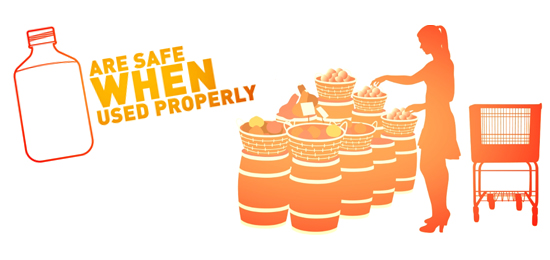A residue is a trace amount of pesticide that sometimes remains on or in a crop. In Europe, residues are carefully monitored and pesticides strictly regulated. Seven reasons why your food is safe:
- In the EU no crop protection product (pesticide) can be used unless it is scientifically established that they have no harmful effects on consumers, farmers and local residents, as well as passers-by, and the environment.
- The legal limits for residue levels – so called ‘Maximum Residue Levels’ (MRLs) – are set by independent government agencies.
- MRLs are trading standards, not safety limits. MRL levels are set significantly lower than thresholds for safety – so even when an MRL is exceeded, this does not mean your health is at risk.
- A typical residue is a little as 0.1mg/kg – the equivalent of a fly on a 10 tonne truck.
- By way of an example; to reach the non-observable adverse effect level of a typical pesticide residue at MRL level, you would have to eat more than 7,000 tomatoes a day, every day, for your entire life!
- More than 70,000 agricultural product samples are tested for residue levels every year in Europe. The latest Annual Residue Monitoring Report showed that 95-97% of samples either contained no measurable residues, or residues below the MRLs.
- The crop protection industry has established targeted training programmes for farmers to ensure optimal safe use of pesticides.
Watch the video:


Tuesday, May 7, 2013
This is very good and informative message to overcome the misunderstanding about the Pesticides.